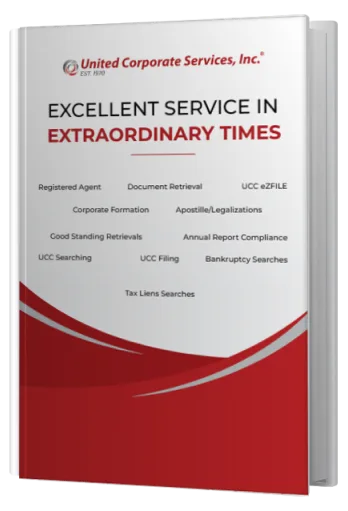Visit the CTA Reference Center to receive the latest updates on the Corporate Transparency Act. Click here!
Visit the CTA Reference Center to receive the latest updates on the Corporate Transparency Act. Click here!
Submitted by UCS on September 19, 2022

New York law permits certain licensed professionals to form a professional corporation (PC), referred to by the New York statute as a professional service corporation, to shield the personal assets of shareholders from liability for debts of the business.
PCs offer stock to shareholders to signify ownership of the PC. PLLCs, on the other hand, call their owners members, who each have ownership interest in the business entity.
Unlike existing business structures such as a professional service corporation (PC), registered limited liability partnership (RLLP) and professional service limited liability company (PLLC), a Design Professional Service Corporation (D.P.C.) has the flexibility of offering an ownership interest in professional corporations to non-licensee employees.
Below are FAQs taken from the New York State Education Department website that will provide additional details of the structure of a New York D.P.C.:
Services within the professions of architecture, landscape architecture, engineering, geology, and/or land surveying may be rendered or offered in a D.P.C., provided that the corporation has at least one individual licensed and registered in each of the professions, is a shareholder in said corporation, and who is licensed and registered in New York in the appropriate profession.
A design professional is defined as an individual licensed and registered in New York as an architect, landscape architect, professional engineer, geologist, or land surveyor.
Yes. Greater than 75% of the stock must be owned by design professionals, greater than 75% of the directors and officers must be design professionals, and the largest single shareholder must be a design professional or, with certain restrictions as discussed in item 6 below, an ESOP. The president, chief executive officer or officers, and the chair of the board of directors also must be design professionals.
Subject to certain conditions, an ESOP may own shares in a D.P.C., although its ownership share, when combined with those of all other non-licensee owners, must total less than 25% of the outstanding shares The new law provides explicitly that an ESOP, either in part or in its entirety, may not constitute part of the greater than 75% of the outstanding shares of stock owned by design professionals. However, an ESOP may be the single largest shareholder in a D.P.C., provided that greater than 75% of the plan’s voting trustees are design professionals and greater than 75% of the plan’s committee members are design professionals.
No. The ownership of PC’s, RLLP’s, and PLLC’s providing architecture, landscape architecture, engineering, geology, and/or land surveying services will still be restricted to those who are licensed and registered in New York in the profession(s) of architecture, landscape architecture, engineering, geology, and land surveying, respectively. To allow non-licensees to have an ownership interest, a D.P.C. must be formed.
No. A D.P.C. may only offer the professional services it is incorporated to provide.
Each of the shareholders, officers, directors, and owners must have been deemed to have been of good moral character. Subpart 28-1 of the Rules of the Board of Regents establishes the procedures to be followed when a moral character question arises.
Yes. Non-licensee shareholders are now eligible for-profit sharing and bonus distributions in a D.P.C. as provided in the new law.
Yes. A D.P.C. may contain the name of a non-licensee.
A D.P.C.’s name must end with either the words “Design Professional Corporation” or the abbreviation “D.P.C.”
Yes. All business entities legally permitted to provide professional engineering, geology, and/or land surveying services in New York State are required to obtain a Certificate of Authorization to Provide Engineering, geology, or Land Surveying Services in New York State from the State Education Department according to section 7210 of the Education Law. If the DPC offers engineering, geology, and land surveying services, it must obtain three Certificates of Authorization – one each for engineering, geology, and one for land surveying.
Click here for a checklist of items to complete prior to submitting your application for a Design Professional Corporation.
For more information on how to form a New York D.P.C., contact a Client Service Representative of United Corporate Services at info@unitedcoporate.com or call (800) 899-8648.

Written by Our Team
United Corporate Services (“UCS”) provides registered agent services in all 50 states and U.S. territories as well as in select international jurisdictions. With 50 plus years of experience in the legal services industry, UCS partners you with a highly skilled staff of Client Service Representatives who can help with navigating through the complexities of forming and maintaining companies for yourself or your client.
Related Posts
March 15, 2024
In 2019, a new regulation was implemented in Canada, mandating federally incorporated, privately held companies incorporated under the Canada Business Corporations Act (CBCA) to establish and maintain comprehensive records of in...
Read Full PostFebruary 14, 2024
In this guest blog post, we present an article authored by Andrew J. Kimball, an Associate at Norris McLaughlin, P.A., and Peter D. Hutcheon, Of Counsel at the same firm. The article delves into the necessary measures that financi...
Read Full PostDecember 15, 2023
In previous installments of this blog series, we have addressed the immediate changes taking effect in January of 2024. The Corporate Transparency Act (“CTA”) not only alters the process of establishing a new corporate entit...
Read Full PostUncover the nuances between a Principal Office address and a Registered Agent address or obtain useful insights on naming a Secured Party in a UCC Financing Statement, among other captivating subjects.
Download a Free Copy of Your e-Book Now!